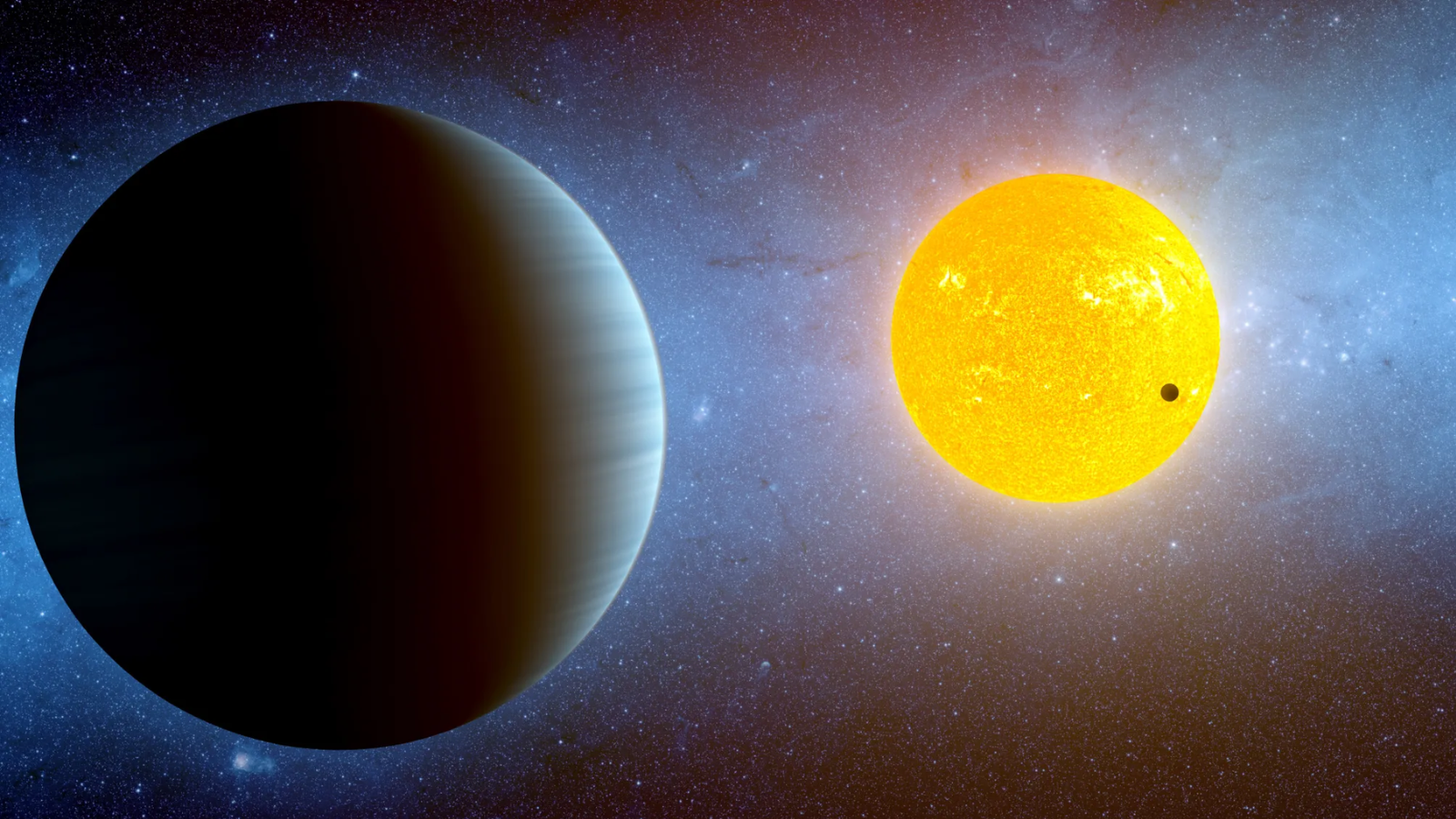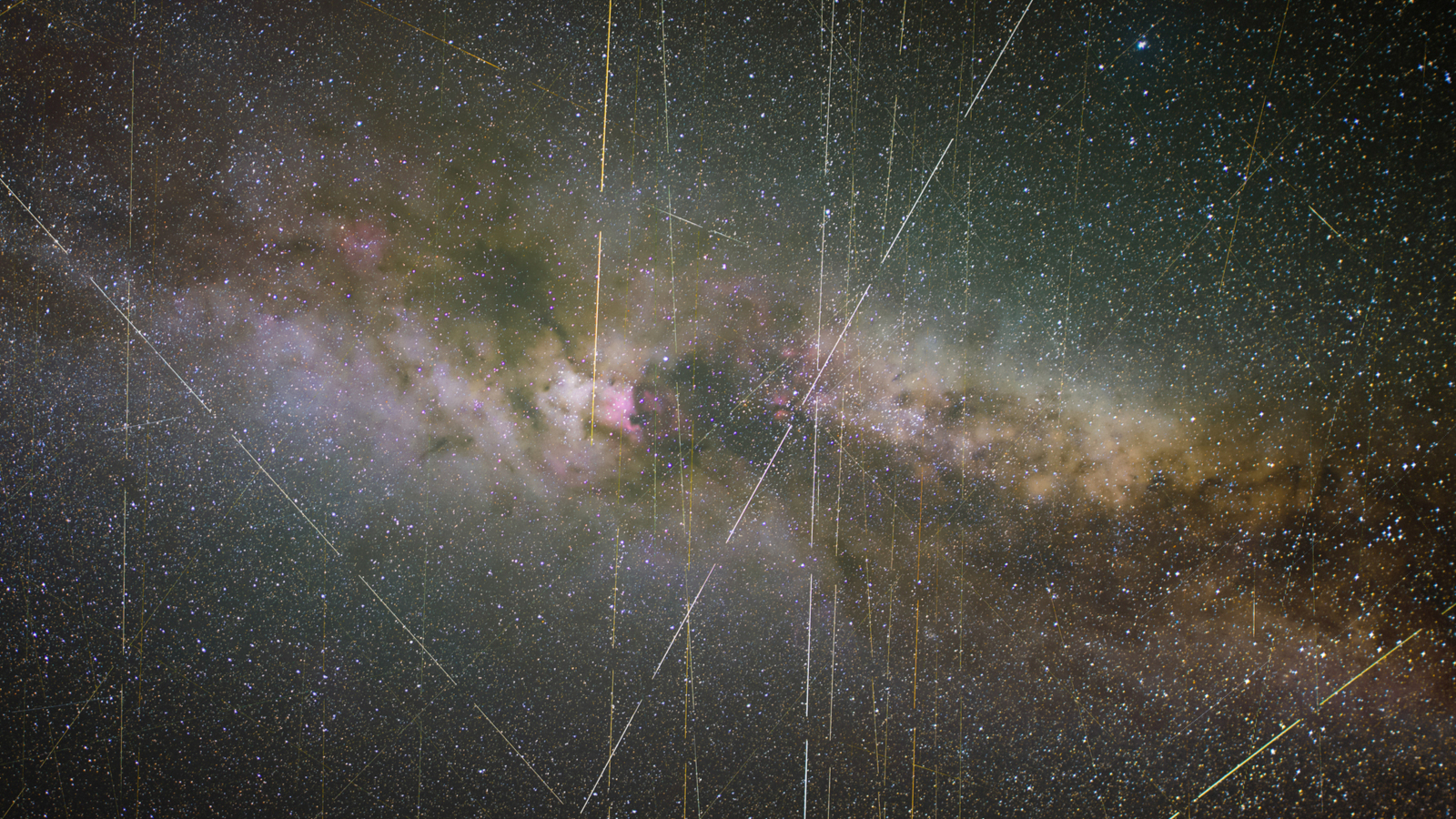Newfound Earth-size exoplanet has a scorching-hot lava side
The exoplanet has a year lasting just 4.2 Earth days.

NASA's Transiting Exoplanet Survey Satellite (TESS) has discovered an extraordinary planet that's roughly the size of Earth but is only one-tenth of our planet's age, with half of its surface likely dominated by scorching-hot lava.
The exoplanet orbits a sun-like star called HD 63433, which is located 73 light-years from Earth, at a proximity of around 12% the distance between Mercury and the sun. This is so close that the planet, designated HD 63433 d, completes an orbit in just 4.2 Earth days.
Because of this proximity to its star, which has 99% the mass of our sun, the planet is tidally locked, just like the moon is to Earth. This means that one side of the planet, its dayside, constantly faces the star and is permanently blasted with stellar radiation while the cooler nightside perpetually faces out into space. This pushes surface temperatures on the planet's dayside up around 2,300 degrees Fahrenheit (1,260 degrees Celsius), NASA officials said.
The violent temperatures of HD 63433 d mean that the planet's dayside is likely a hemisphere of blisteringly hot lava resembling that of exoplanets like CoRoT-7 b and Kepler-10 b.
However, this exoplanet is also remarkable for a slightly less extreme reason than its lava-dominated dayside.
HD 63433 d is also the smallest confirmed exoplanet that's less than 500 million years old. In addition to this, at 1.1 times the diameter of our planet, HD 63433 d is the closest roughly Earth-size planet to be discovered that is less than 400 million years old.
Get the Space.com Newsletter
Breaking space news, the latest updates on rocket launches, skywatching events and more!
For comparison: Earth and the rest of our solar system are around 4.5 billion years old, meaning HD 63433 d appears to be just around 10% of the age of our planet.
The Earth-orbiting TESS discovered HD 63433 d as it crossed, or "transited," the face of its star, causing a slight dip in light from its stellar parent.
TESS, which launched in April 2018, has used this transit method of exoplanet detection to spot over 4,000 alien worlds, of which several hundred have been confirmed.
This isn't the first planet to be discovered orbiting HD 63433; the existence of sibling worlds prompted further investigation of the system. In 2020, the transit method uncovered HD 63433 b and HD 63433 c. The former is a roughly Neptune-size planet around 2.1 times wider than Earth and roughly five times more massive. HD 63433 b orbits its star at 0.07 times the distance between Earth and the sun, with a year that lasts 7.1 Earth days.
HD 63433 c is slightly larger, around 0.23 times the size of Jupiter, with a mass around seven times that of Earth. This world takes a relatively leisurely orbit of 20.5 Earth days around its star, dwelling at a distance 0.14 times that between Earth and the sun.
The unique features of HD 63433 make it a primary target for subsequent investigations that will aim to further study both the day and night hemispheres of this world.
The discovery of HD 63433 d was discussed on Wednesday (Jan. 10) at the 2024 American Astronomical Society Meeting in New Orleans, Louisiana, and is detailed in a paper published that same day in The Astronomical Journal.
Join our Space Forums to keep talking space on the latest missions, night sky and more! And if you have a news tip, correction or comment, let us know at: community@space.com.

Robert Lea is a science journalist in the U.K. whose articles have been published in Physics World, New Scientist, Astronomy Magazine, All About Space, Newsweek and ZME Science. He also writes about science communication for Elsevier and the European Journal of Physics. Rob holds a bachelor of science degree in physics and astronomy from the U.K.’s Open University. Follow him on Twitter @sciencef1rst.
-
rod HD 63433 d, an interesting exoplanet and report. At least 3 exoplanets reported in this system.Reply
https://exoplanet.eu/catalog/hd_63433_d--8922/
I note using the exoplanet.eu site, exoplanets with radii 0.38 to 1.2 earth size number 395 (includes TRAPPIST-1 system) and at the nasa archive site, 384 (incudes TRAPPIST-1 system). A large number of exoplanets shown now with sizes like Mercury, Venus, Earth, and Mars. Little or no reporting showing these exoplanets have abundant liquid water and life on them. -
rod FYI, here is another report on an exoplanet close to earth size known but again, very different than our home world.Reply
LP 791-18 d, Astronomers discover alternative Earth likely covered with volcanoes, https://phys.org/news/2023-05-astronomers-alternative-earth-volcanoes.html
ref - A temperate Earth-sized planet with tidal heating transiting an M6 star, https://www.nature.com/articles/s41586-023-05934-8, 17-May-2023. "Abstract Temperate Earth-sized exoplanets around late-M dwarfs offer a rare opportunity to explore under which conditions planets can develop hospitable climate conditions..."
